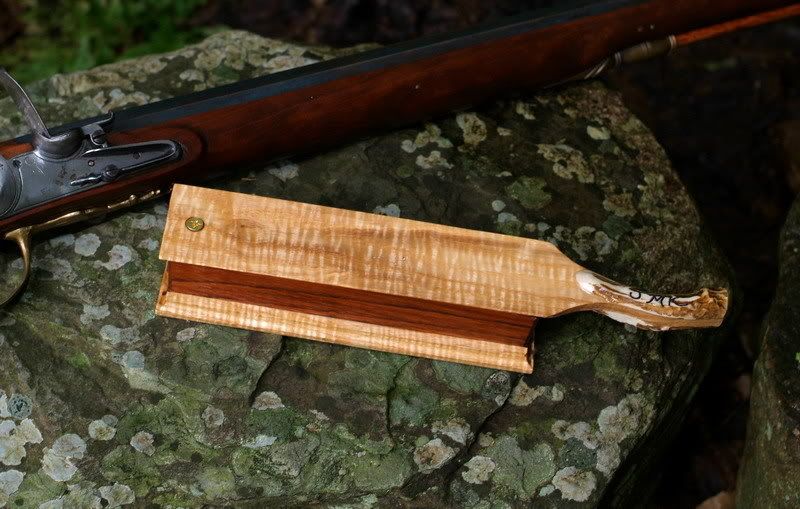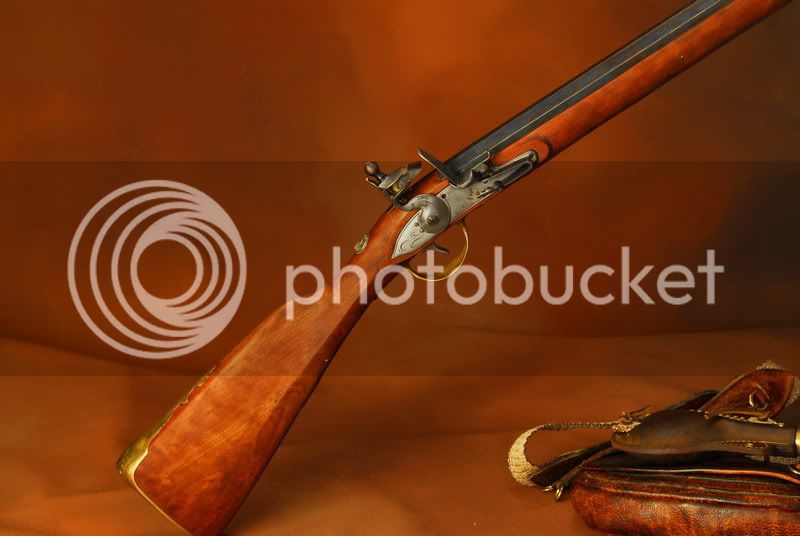Lye reacts with the tannic acid in the wood. Wood with more tannic acid will produce a deeper color.
Cherry is pretty high in tannic acid, and lye will turn it red.
Maple is not terribly high in tannic acid, and the amount will vary from piece to piece. I have tried it on several pieces of sugar maple. Some color just a little bit, some color really nicely, and some don't color at all. I can imagine that if you wash your stock with a tannic acid solution befor lye application, you can darken the color. Haven't tried this yet, but I will. Just gather up a bunch of acorns and boil them. That should produce plenty of tannic acid.
Just like with Aqua Fortis, it's a chemical reaction, not really a "stain", and it does what it does, more applications won't really change it any (also, just like with A.F., it does need to be slopped on heavily). No heat is required.
Here's the best looking result on one of my sugar maple blanks:
This blank is MINE, and is going to be used on "The Ultimate Rifle"...
My lye is Red Devil Lye, which is pure stuff. Comes in a plastic can you get at the grocery store (drain cleaner). It is caustic, and will eat your fingerprints off. If you really want to be authentic, you can use wood ashes.







